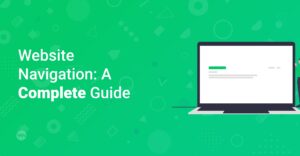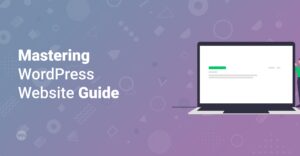Preface
Creating a blog that not only delivers valuable content but also captivates your audience visually is key to success. With Elementor, even the free version, you can design a stunning blog layout without writing a single line of code. This guide will walk you through the process, offering tips and tricks to make your blog stand out.
At STARTMAKINGWEBSITES, we are dedicated to providing you with the necessary skills and resources to create exceptional websites with ease. So, let’s dive in and transform your blog into a visually appealing platform!
Why Use Elementor for Your Blog Layout?
Elementor is a powerful drag-and-drop page builder that simplifies website design. Here’s why it’s perfect for creating your blog layout:
- User-Friendly Interface: Elementor’s intuitive interface makes it easy for beginners to design professional-looking layouts.
- Customization Options: Enjoy extensive customization options to tailor every aspect of your blog to your brand.
- Responsive Design: Ensure your blog looks great on all devices with Elementor’s responsive design features.
- No Coding Required: Build complex layouts without writing any code.
- Free Version Availability: The free version of Elementor offers plenty of features to get you started.
Info: If you’re new to Elementor, check out our comprehensive guide on getting started with Elementor.
Step-by-Step Guide to Building a Stunning Blog Layout with Elementor (Free Version)
1. Install and Activate Elementor
First, you need to install and activate the Elementor plugin. Here’s how:
- Log in to Your WordPress Dashboard: Access your WordPress admin area.
- Navigate to Plugins: Click on “Plugins” in the left-hand menu, then “Add New.”
- Search for Elementor: Type “Elementor” into the search bar.
- Install the Plugin: Find the Elementor Page Builder plugin and click “Install Now.”
- Activate the Plugin: After installation, click “Activate.”
2. Choose a Theme That Works Well with Elementor
While Elementor works with most WordPress themes, some themes are better optimized for it. Astra is an excellent choice because it’s lightweight, highly customizable, and integrates seamlessly with Elementor. Here’s how to install a theme:
- Go to Appearance: In your WordPress dashboard, click on “Appearance” and then “Themes.”
- Add New Theme: Click the “Add New” button.
- Search for a Theme: Type “Astra” into the search bar.
- Install and Activate: Find the Astra theme, click “Install,” and then “Activate.”
Hint: Elementor also works great with the Hello theme, which is specifically designed to be a blank canvas for Elementor designs.
3. Create a New Page for Your Blog Layout
- Navigate to Pages: In your WordPress dashboard, go to “Pages” and click “Add New.”
- Name Your Page: Give your page a relevant title, such as “Blog” or “Articles.”
- Edit with Elementor: Click the “Edit with Elementor” button to open the Elementor editor.
4. Design Your Blog Layout
A. Setting Up the Basic Structure
- Choose a Layout: Start by selecting a basic layout for your blog. You can choose a pre-designed template or build one from scratch.
- Add a Container: Drag and drop a container widget onto the page. Containers help you organize your content into sections.
- Configure the Container: Adjust the container settings to suit your preferences. You can set the width, height, and background color.
B. Adding the Posts Widget
- Find the Posts Widget: In the Elementor panel, search for the “Posts” widget.
- Drag and Drop: Drag the “Posts” widget into your container.
- Customize the Posts Widget:
- Layout: Choose a layout style, such as grid, list, or masonry.
- Columns: Set the number of columns you want for your posts.
- Posts Per Page: Define how many posts you want to display on each page.
- Image Size: Select the appropriate image size for your featured images.
- Meta Data: Choose which meta data to display (e.g., author, date, comments).
- Excerpt Length: Set the length of the excerpt displayed for each post.
- Read More Button: Customize the “Read More” button text and style.
Here’s an example of how to customize the Posts widget:
<div class="elementor-posts elementor-posts--grid elementor-posts--skin-classic elementor-grid-3">
<article class="elementor-post elementor-grid-item">
<a href="#">
<div class="elementor-post__thumbnail">
<img src="image.jpg" alt="Post Thumbnail">
</div>
<div class="elementor-post__text">
<h3 class="elementor-post__title">Post Title</h3>
<div class="elementor-post__excerpt">Excerpt of the post...</div>
<span class="elementor-post__read-more">Read More</span>
</div>
</a>
</article>
</div>
C. Adding Sidebar Widgets
- Add Another Container: Create a new container next to your posts container to serve as a sidebar.
- Add Widgets: Drag and drop widgets into your sidebar container. Useful widgets include:
- Search: Allows visitors to search your blog.
- Categories: Displays a list of blog categories.
- Recent Posts: Shows a list of recent posts.
- Archives: Provides access to older posts by month.
- Custom HTML: Add custom HTML code, such as social media feeds or ads.
Info: Make sure your sidebar doesn’t overshadow your content. Keep it clean and relevant.
D. Style Your Layout
- Fonts and Colors: Use Elementor’s styling options to customize the fonts and colors of your blog. Choose a typography and color scheme that aligns with your brand.
Info: Need help with fonts? Check out this article on how to choose the right fonts for your website.
- Backgrounds: Add background images or colors to your containers to create visual interest.
- Spacing: Adjust the spacing between elements to improve readability and visual appeal.
- Borders and Shadows: Use borders and shadows to add depth and dimension to your layout.
5. Make It Responsive
Ensure your blog looks great on all devices by making it responsive:
- Enter Responsive Mode: In the Elementor editor, click the “Responsive Mode” icon at the bottom of the panel.
- Adjust Settings: Customize the layout for desktop, tablet, and mobile devices.
- Column Width: Adjust column widths to fit different screen sizes.
- Font Sizes: Change font sizes for readability on smaller screens.
- Spacing: Adjust spacing to prevent elements from overlapping.
- Visibility: Hide elements that are not necessary on mobile devices.
6. Add a Call to Action
Encourage your visitors to engage with your content by adding a call to action (CTA):
- Choose a CTA: Decide what action you want visitors to take (e.g., subscribe to your newsletter, leave a comment, share the post).
- Add a Button or Form: Use Elementor’s button or form widgets to create your CTA.
- Place the CTA Strategically: Position your CTA in a prominent location, such as at the end of your blog post or in the sidebar.
- Customize the CTA: Make your CTA visually appealing and relevant to your content.
7. Optimize for SEO
Improve your blog’s visibility in search engines by optimizing it for SEO:
- Use Relevant Keywords: Incorporate relevant keywords into your blog post titles, headings, and content.
- Optimize Images: Use descriptive alt tags for your images to improve accessibility and SEO.
Info: Check out this article on how to optimize your website for SEO.
- Meta Descriptions: Add meta descriptions to your pages and posts to provide a summary of your content to search engines.
- Use Internal Linking: Link to other relevant content on your website to improve navigation and SEO. Consider linking to posts such as 10 Expert Tips and Tricks for Mastering Elementor Page Builder or Top 10 Valuable AI Plugins for WordPress to Boost Your Blog.
8. Test and Refine
- Preview Your Layout: Before publishing, preview your layout to ensure it looks and functions as expected.
- Test on Different Devices: Test your layout on different devices and browsers to ensure responsiveness and compatibility.
- Gather Feedback: Ask friends, colleagues, or beta testers to review your layout and provide feedback.
- Refine Your Design: Based on the feedback, make any necessary adjustments to improve the user experience.
Conclusion
Building a stunning blog layout with Elementor (free version) is achievable with the right approach and a bit of creativity. By following the steps outlined in this guide, you can create a visually appealing and engaging blog that attracts and retains readers. Remember to focus on user experience, responsiveness, and SEO to maximize the impact of your blog. At STARTMAKINGWEBSITES, we are committed to helping you achieve your website goals with ease. Happy designing!



